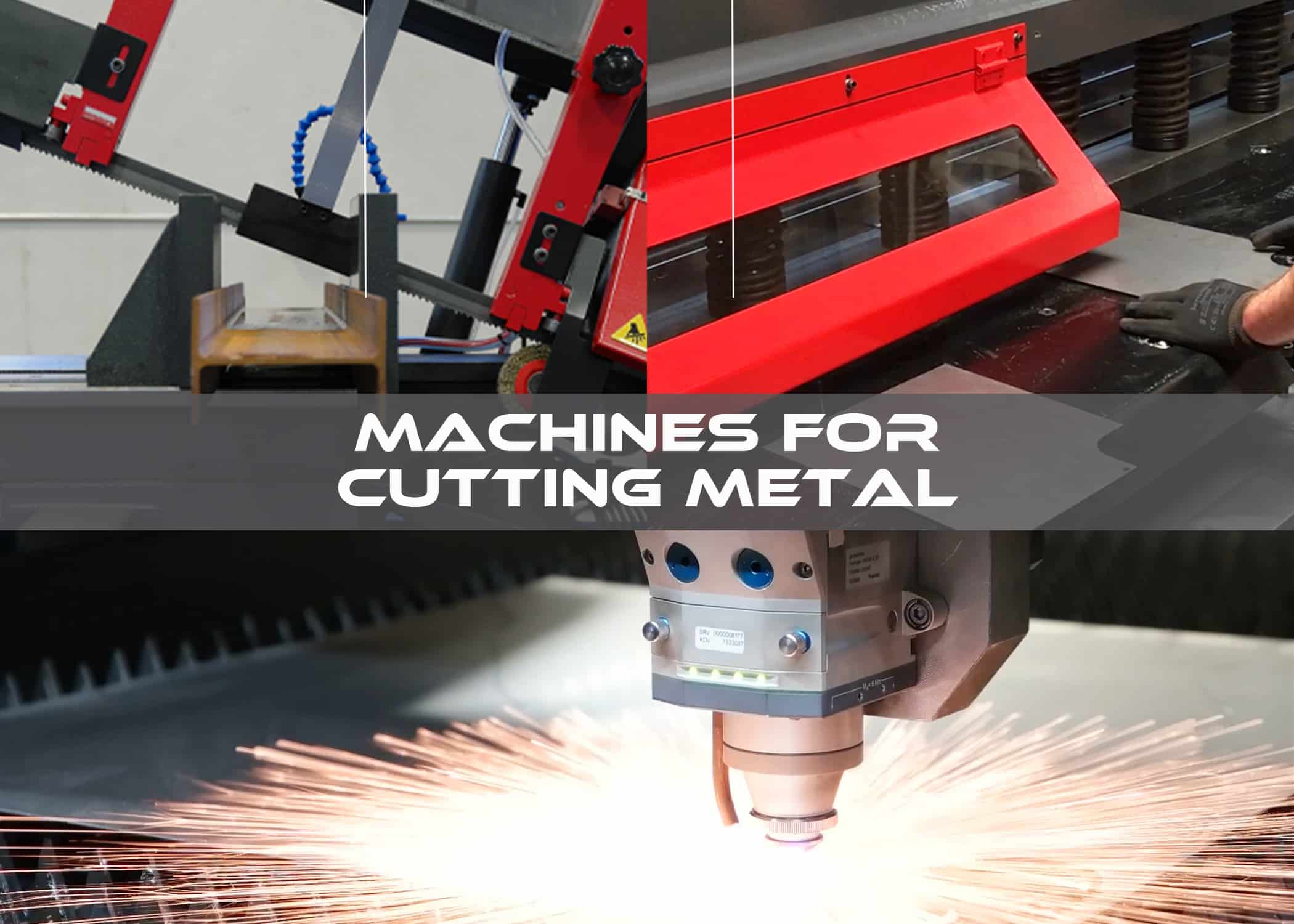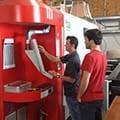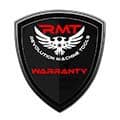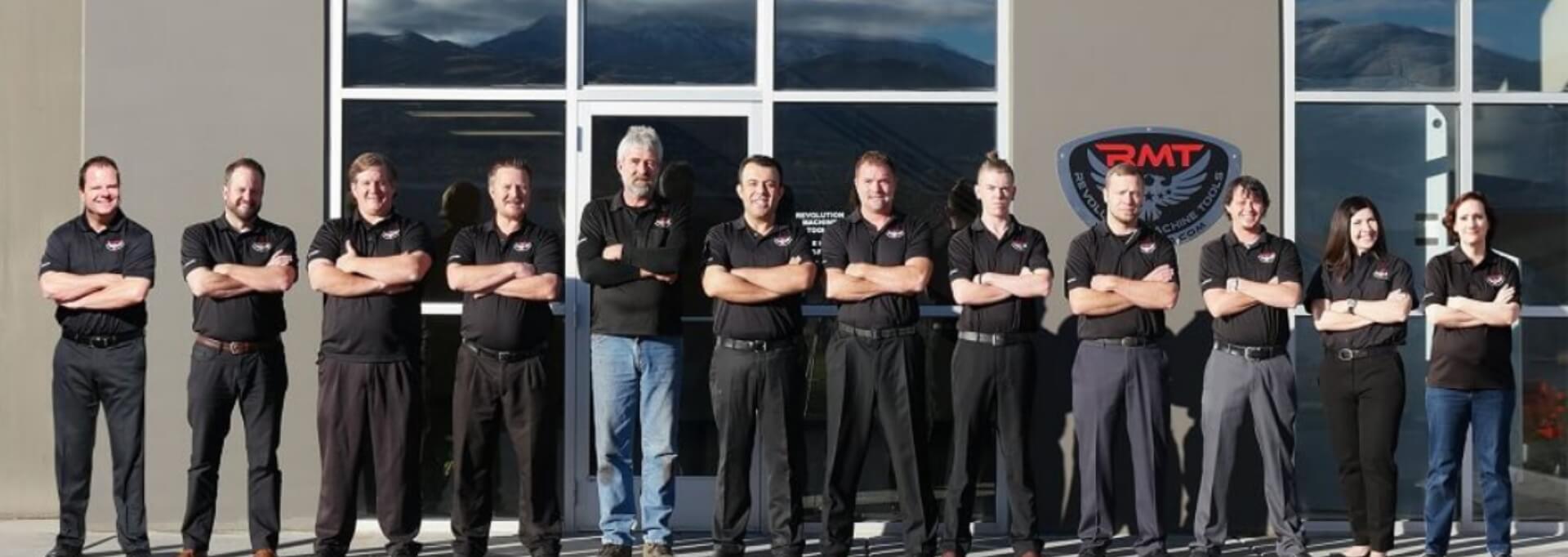Technologies of Metal Cutting
Methods for cutting metal have been around as long as metalworking itself. Small sheets of copper, flattened by hand working, could be scored by a hard, sharp piece of stone or metal until they could be flexed and severed. As primitive as that practice was, many modern contractors and roofers working with aluminum siding and flashing today will still use a utility knife to score and snap their workpieces into shorter lengths.
There are two basic ways to cut metal: through impact and through heat. As technology has progressed in recent decades, a wide variety of metal cutting equipment utilizing one (or both) of those processes have arrived on the market for the use of metal fabricators.
Impact Cutting. The traditional metal-cutting method involves introducing something harder to the workpiece, such as a solid blade driven by force, a serrated blade moving at high speed, or even propelled particles. Common machines in this category include:
- Saws, including band saws (horizontal or vertical), circular saws with metal-cutting blades, and abrasive cut-off saws using high-speed abrasive wheels to grind through metal profiles. While all saws will generate heat through friction, some types of circular saw blades specifically use heat to help in the cutting metal process, such as friction saw blades and hot saw blades. Cold saws, in contrast, are designed to transfer the heat that is generated into the chips that are cut away from the workpiece.
- Shearing machines (usually just called shears) are pieces of equipment that slice a straight cut through lighter gauge sheet metal or thicker plate metal. They can be manually powered, like a light gauge stomp shear, or use mechanical or hydraulic power.
- Ironworkers, multi-function machines primarily used for punching that generally include stations for processes such as shearing small, thick profiles like angle iron, and bars that are round, square, or flat.
- Waterjets, cutting metal machines that use a high-pressure stream of water mixed with abrasive materials to cut through plate metal, including workpieces that are several inches thick.
- Machine tools, like lathes, mills, and drills, aren’t generally used to separate a piece of metal into two separate components, but they do cut into metal, creating chips while they shape a workpiece into the desired form.
- Powered hand tools, such as angle grinders or rotary tools using abrasive grinding discs, reciprocating saws, and oscillating tools for use in tight spaces.
- Manual hand tools, while not technically machines, are still very much in use by most metal workers to some extent. These include hacksaws, hand shears (often called tin snips), bolt cutters, and chisels.
Heat Cutting. It’s been known since the development of forging and blacksmithing that heat can be used to manipulate metal. It is only in the more recent past, however, that technology was sufficiently developed to use heat to cut through metal in a precise fashion. Methods for generating cutting heat involve such sources as flame, plasma, electricity, and even light. Heat-based metal cutting machines include:
- Oxy-fuel torches, which combine fuel gas and oxygen to create a high-temperature flame that can cut through metal.
- Plasma cutters, which use a high-velocity jet of ionized gas (called plasma) to melt and cut through metal.
- Electric discharge machines, which operate on a principle called electrical discharge erosion. Often referred to as EDMs, they discharge sparks in a dielectric fluid between an electrode and a submerged workpiece to vaporize metal.
- Laser cutters, which make very precise cuts in metal sheets, tubes, or other profiles by focusing a laser beam to melt or vaporize a minute area of the workpiece.
It’s always important to match the machine to the metal cutting project. A bandsaw won’t be very effective on sheet metal, while a shear likely won’t do well with cutting angle iron. The thickness of the metal, the width of the cut, and the urgency of the job are all considerations that will make a specific type of machine preferable to others.
Metal Cutting Machines from Revolution Machine Tools
Partnering with a reliable supplier of high-quality metalworking machinery can be a real benefit to the fabricator who is looking to outfit his shop with exactly the right equipment to perfectly complete every job.
When it comes to metal-cutting technology, Revolution Machine Tools offers over 100 models of the very best cutting equipment found on the market today. Please give them a call for a competitive quote on your next metalworking solution.
RMT Bandsaws:
- RMT S-ECO™ Series of Manual Bandsaws (3 models)
- RMT S-FAB™ Series of Semi-Automatic Bandsaws (16 models)
- RMT S-SMART™ Series of Automatic Bandsaws (13 models)
- RMT S-GENIUS™ Series of Super Automatic Bandsaws (2 models)
RMT Cold Saws:
- RMT S-FAB CLD™ Series of Cold Saws (3 models)
- RMT S-SMART HSC™ Series of Cold Saws (2 models)
- RMT S-GENIUS HSC™ Series of Cold Saws (3 models)
RMT Ironworkers:
- RMT I-FAB™ Series of Ironworkers (7 models)
RMT Fiber Lasers (Sheet Cutting):
- RMT KYSON™ Series of Sheet Cutting Fiber Lasers (11 models)
RMT Fiber Lasers (Tube and Profile Cutting):
- RMT KYSON™ Series of Tube Cutting Fiber Lasers (2 models)
RMT Shears:
- RMT C-FAB™ Series High Speed Mechanical Direct Drive Shears (12 models)
- RMT C-SMART™ Series Hydraulic Swing Beam Shears (12 models)
- RMT C-GENIUS™ Series Hydraulic Variable Rake Shears (18 models)
